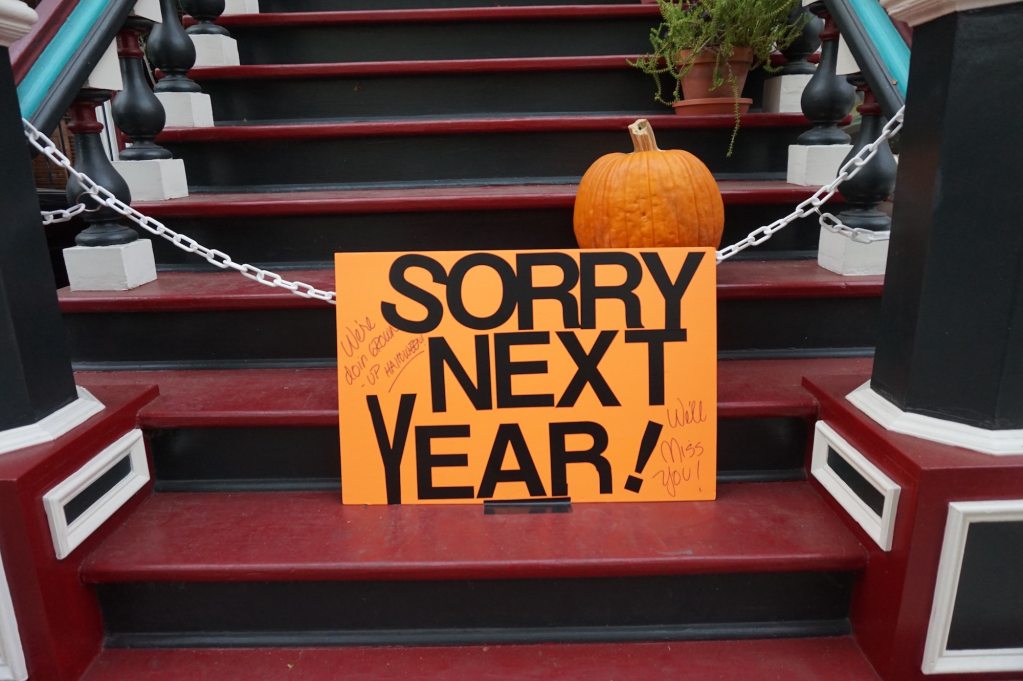When ghouls and pumpkins hit the streets of your neighborhood this Halloween, many parents wonder if there’s a right time for kids to stop trick or treating. If you think your child is getting up there in age but they’re not ready to let go of this fun tradition, there’s no need to rush them to grow up. Experts agree that as long as kids follow the social guidelines and observe the holiday respectfully, there’s no harm in trick or treating at any age. So, go ahead and indulge in a little trick or treating yourself! Remember, there’s no age limit to having some spooky fun.

Legal cutoffs
Trick or treating age limits are such a controversial topic that some towns have gone as far as establishing legal cutoffs. If your town doesn’t have such laws, then parents have the last word. But if you live in any of these areas, here are the ages when trick or treating becomes a misdemeanor:
- Chesapeake, Virginia — age 12
- Meridian, Mississippi — age 12
- Bishopville, South Carolina — age 12
- Boonsboro, Maryland — age 12
- Bathrust, New Brunswick, Canada — age 16
To avoid any trouble with the law, it’s best to research and abide by your local regulations, especially because certain places even ban dressing up after a certain age.
General consensus
Most towns don’t have any local ordinances regarding trick or treating age limits. This means that it’s up to parents and children to decide when they’ve had enough of this tradition. For most children, this happens naturally as they lose interest in the activity.
If you’re wondering how most people feel about this, a 2019 survey found that Americans think that 18.7 is the appropriate age for kids to stop trick or treating, while one in four Americans agree that you’re never too old to trick or treat.
Expert opinion

Overall, parenting experts agree that there’s no clear cutoff for trick or treating. What they find most important is for children to enjoy themselves and follow the rules their parents set forth. And while each parent is free to establish their own ground rules for this holiday, these are the conventions that most have come to expect.
Safety
Children’s well-being is of the utmost importance during Halloween. Many neighborhoods have large crowds and groups of children walking in the dark, which can lead to dangerous situations. To avoid getting lost or causing car accidents, children should stay in groups at all times.
Depending on the age of your children, a parent or chaperone should accompany the kids who are too young to trick or treat on their own. This is especially important when little ones go outside of their neighborhood.
Going door-to-door also presents the dangerous element of strangers handing out candy to children. Keep kids safe during Halloween and remind them never to accept unwrapped candy or treats that look tampered with. Inspect your child’s bucket frequently or when they return home to make sure the candy is safe to eat.
Etiquette

While kids of all ages should say “trick or treat!” and “thank you,” it’s especially important to remind the older ones to mind their manners. Make sure older kids are letting the little ones go first and that they treat them with respect. Sugared-up teens can get excited and forget that Halloween is a big deal for younger children.
Some homeowners set limits on how many pieces of candy a child can have. Before your older kids go trick or treating, remind them to stick to the amount of candy allowed per person. This helps ensure that all kids get candy and that the homeowners don’t run out too soon.
When homes have their lights off, it’s common knowledge that their home’s not participating in Halloween. If a house is dark, make sure your kids don’t ring the doorbell or walk up the porch. This is to avoid bothering the homeowners and also to make sure your children stay safe.
Costumes
Costumes are a must for kids who go trick or treating. Any teen who goes trick or treating should wear an appropriate costume in order to receive candy.
Whether your child wants to trick or treat until they graduate high school or they’re over it as soon as they enter middle school, both are OK. The most important part of Halloween is to have fun. As long as your child is enjoying the tradition, most parents agree that trick or treating is a great custom for kids of all ages — including themselves!


